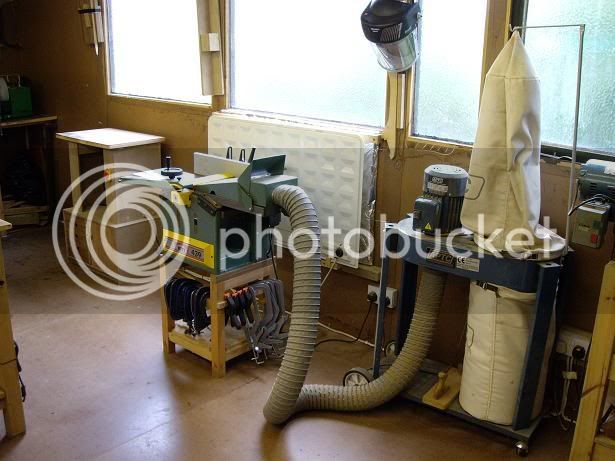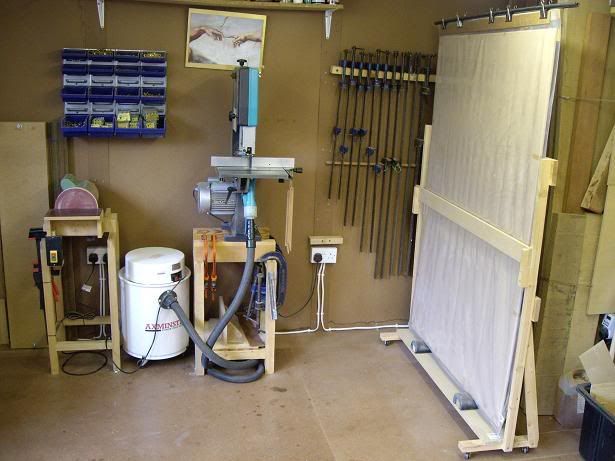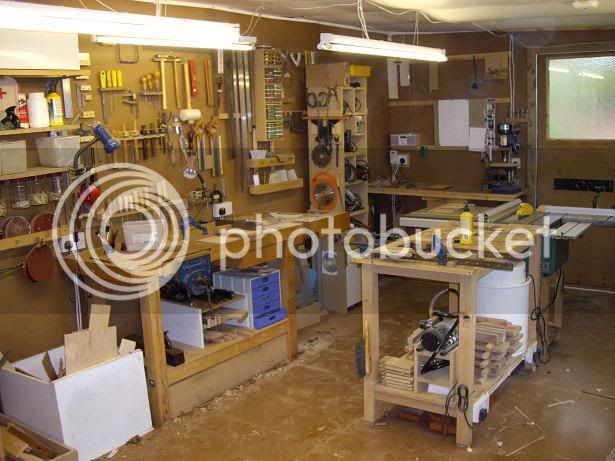skywriter
Member
Hi all, i'm looking for some advice. . . . . In the next couple of weeks i'm looking to put a few new machines into the workshop (Brick built with tiled roof) it measures 14' by 12'6. The doors are along the long wall and there are no windows (pics to follow - cant find the camera cable atm) anyway the plan is to start from scratch with the exception of my faithful BAS316G Bandsaw and Sealy 16 Speed Pillar Drill. So far i've been tempted by the Record Power range, in particular the TS200C table saw, PT260-X Planer thicknesser and the CX2600 Chip extractor. They seem to fit the bill regards price, quality etc. Budget for machines £1000 - £1500
- your opinions on them / alternatives for a similar budget would be appreciated before I fork out wads of cash.
I know i'm doing this ass upwards, putting the machines in before the renovations to the building are undertaken, but there is a method to my madness - the building belongs to my parents and as such I can't renovate till August/September. Which brings me on to my next request for help.
- How would YOU lay out the w/shop, bearing in mind the small(ish) space available. Your starting with a blank canvas as it were, placement of power cables, lights, work bench(s), storage etc can/will be fitted to suit. There needs to be a SCMS in there too, as well as a place for my laithe. I have no problems with moving one machine to use another. I have no need for stock storage in the w/shop as I am lucky enough to have a dedicated storage space for timber in a lean too behind the w/shop.
all help and advice very much appreciated.
Adrian
- your opinions on them / alternatives for a similar budget would be appreciated before I fork out wads of cash.
I know i'm doing this ass upwards, putting the machines in before the renovations to the building are undertaken, but there is a method to my madness - the building belongs to my parents and as such I can't renovate till August/September. Which brings me on to my next request for help.
- How would YOU lay out the w/shop, bearing in mind the small(ish) space available. Your starting with a blank canvas as it were, placement of power cables, lights, work bench(s), storage etc can/will be fitted to suit. There needs to be a SCMS in there too, as well as a place for my laithe. I have no problems with moving one machine to use another. I have no need for stock storage in the w/shop as I am lucky enough to have a dedicated storage space for timber in a lean too behind the w/shop.
all help and advice very much appreciated.
Adrian











